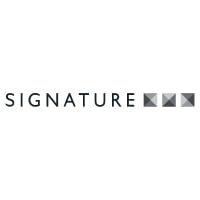

Director & legal counsel | SNA Europe



Anne-Laure Nguyen-Fitzgerald
Director & legal counsel | SNA Europe
How do you approach managing legal aspects during periods of instability or crisis to ensure the organisation’s resilience?
To continue with the maritime metaphor (I am Breton, and it shows!), the Legal Department must stay the course and make a difference by promptly translating new obligations into clear and practical summaries adapted to operational needs, based on a deep knowledge of the business.
As the complexity and speed of new regulations intensify, communication becomes absolutely key. Working across the supply chain places the Legal Department at the intersection of activities and as the natural interface between all functions. Our department has been gradually leading cross-functional projects. With everyone around the table, it is easier and faster to explain concepts, seek suitable solutions, and ensure they are understood, accepted, cascaded, and implemented by all. In the event of a change, all members of the team can react in a timely manner. This fast-track, multi-channel approach is precisely what we aim to roll out across the group.
AI has been taken seriously as a potentially revolutionary technological change in the legal world for a number of years now. Has it had a meaningful impact in how your legal team works in this time?
Two letters only, and yet there is already a vast literature discussing the pros and cons of this new technology, generating both fear and hope. As far as legal work is concerned, AI can be used as an ally, especially in this fast-evolving regulatory framework, and can provide rapid support when researching specific information or even drafting agreements. To do so, it should operate in a safe and controlled environment, and some legal service providers have begun offering closed and verified sources of information for lawyers to use.
But make no mistake: AI is only a tool and its effectiveness depends on the user. No one can absolve themselves of environmental responsibility by using this technology. The question remains: do I really need it to accomplish this task?
Looking forward, what trends do you foresee in the legal landscape over the next 5–10 years that companies should prepare for?
One can imagine that, just as in the industrial sector in the past, some tasks in the Legal Department will be performed using AI, with a lawyer’s involvement at the end of the validation process. This could include tasks such as drafting simple agreements, or possibly some legal analysis or risk assessment. However, I strongly believe that lawyers will remain essential in the decision-making process, negotiations, and dispute resolution, which require solid ‘EI’ — Emotional Intelligence — still the comparative advantage of humans over Artificial Intelligence. This should be our response and our path.
European legal counsel and director | SNAP-ON
director & legal counsel | SNA Europe
With a PhD in international law at the World Trade Organization (WTO) in Asia and a lecturer in Paris and Thailand between 1993 and 1998, Anne-Laure Nguyen-Fitzgerald left her academic...